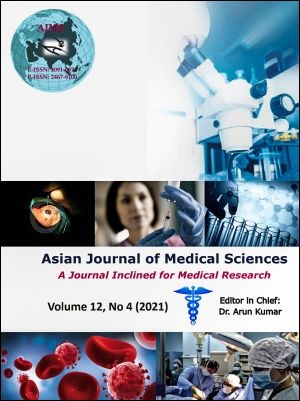Patterns of maxillofacial fractures treated in a tertiary care government hospital of Puducherry – A descriptive cross-sectional study
Keywords:
Maxillofacial trauma, Mandible, Maxilla, Zygoma, lefort fractureAbstract
Background: Maxillofacial trauma is most common in both developing and developed countries. Descriptive studies from various parts of the world helps us in understanding the patterns of these injuries which in turn help in formulating tailor made prevention strategies for that particular geographic region.
Aims and Objectives: The aim of this study is to assess the patterns of maxillofacial fractures treated in IGMC & RI in Puducherry from 2011-2018. The objectives are to find out the type of maxillofacial fractures treated, to estimate the demographic data of maxillofacial fracture victims and to assess the treatment modality used
(Closed reduction /open reduction and internal fixation (ORIF).
Materials and Methods: Data of surgically treated patients of maxillofacial fractures were retrieved, tabulated and analysed using SPSS software – 24 for descriptive and inferential statistics.
Results: The estimated results clearly indicate that males were most commonly affected by maxillofacial trauma. The common age group is 20 to 30 years. The major contributing aetiology for trauma is RTA and the common fracture that was encountered was fracture mandible and the fractures were largely managed by open reduction.
Conclusion: The results obtained are expected to greatly contribute for the planning of prevention actions and management in health, assistance practices to victims of facial trauma, epidemiological surveillance and road traffic rules.
Downloads
Downloads
Published
How to Cite
Issue
Section
License
Authors who publish with this journal agree to the following terms:
- The journal holds copyright and publishes the work under a Creative Commons CC-BY-NC license that permits use, distribution and reprduction in any medium, provided the original work is properly cited and is not used for commercial purposes. The journal should be recognised as the original publisher of this work.
- Authors are able to enter into separate, additional contractual arrangements for the non-exclusive distribution of the journal's published version of the work (e.g., post it to an institutional repository or publish it in a book), with an acknowledgement of its initial publication in this journal.
- Authors are permitted and encouraged to post their work online (e.g., in institutional repositories or on their website) prior to and during the submission process, as it can lead to productive exchanges, as well as earlier and greater citation of published work (See The Effect of Open Access).




